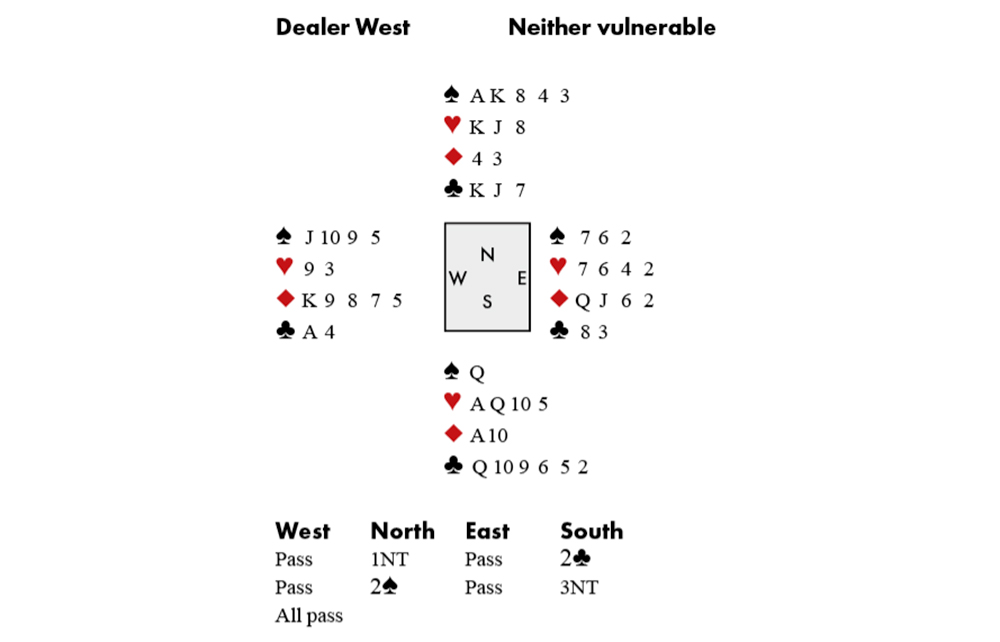Being a bridge pro is a dream job – I mean, how many people get to make a living playing a game they love? My friend Ollie Burgess is one of the best pros in London; he’s in constant demand, and deservedly so. He really enjoys playing with clients, especially those who have an aptitude for the game and are keen to work and improve. It’s obviously more frustrating playing with people who (to be blunt) don’t have a knack for bridge and never will. But even that can pose a fun challenge. To try and compensate for their mistakes requires skill and inventiveness, and Ollie has both in abundance. He recently showed me this hand he defended with a client at a tournament in Oxford (see diagram).
2♣ was Stayman. South should have continued with 3♣ over North’s 2♠ (6♣ is a great contract), but he settled for 3NT. East, Ollie’s partner, led the ♦2. Declarer played the ♦10 from dummy, and Ollie’s ♦K won. He returned the ♦5, but East, seeing dummy’s bare ♦A, played low – an unfortunate decision, as it blocked the suit. Ollie could see that now, with only 3 diamonds and the ♣A to take, 3NT was likely to make. However, only he knew the diamonds were blocked. So when declarer cashed dummy’s ♠Q, Ollie spotted a chance to give him a losing option: without missing a beat, he dropped the ♠9. Declarer came to hand with a heart and continued with the ♠A. Ollie dropped the ♠10. Now, hopeful Ollie had started with ♠J109 (which would make all his spades good), he cashed the ♠K – and to his dismay Ollie played the ♠5. He switched to a club, but it was too late: Ollie won, cashed the ♠J, and played a diamond to his partner.







Comments
Join the debate for just £1 a month
Be part of the conversation with other Spectator readers by getting your first three months for £3.
UNLOCK ACCESS Just £1 a monthAlready a subscriber? Log in